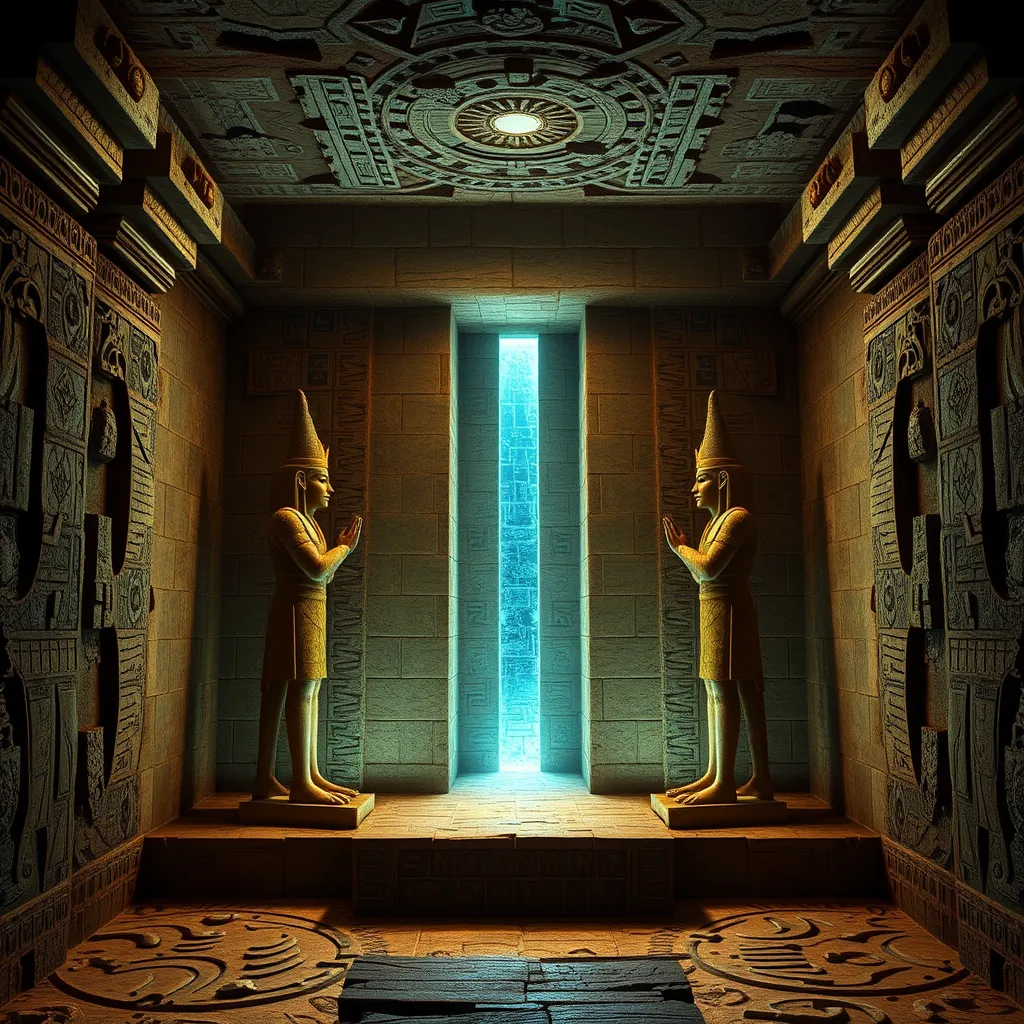The Duat: Exploring the Myths and Legends of the Egyptian Underworld
I. Introduction to the Duat
The Duat, often referred to as the Egyptian underworld, is a realm deeply rooted in the beliefs of ancient Egyptian civilization. It represents not only a physical space but also a spiritual journey that every soul must undertake after death. The Duat is significant as it embodies the ancient Egyptians’ understanding of life, death, and the afterlife, serving as a gateway to immortality for those deemed worthy.
In ancient Egyptian beliefs, the Duat is where the deceased would travel to face judgment and ultimately decide their fate in the afterlife. This journey through the Duat is symbolic of the soul’s transformation, highlighting the importance of morality and the balance between chaos and order.
II. The Structure of the Duat
The Duat is a complex and multifaceted realm, often described as a series of layers or regions that the soul must navigate. Each section of the Duat is uniquely characterized by its own challenges and environments.
- The Fields of Iaru: A paradise-like area where the souls of the righteous could enjoy eternal bliss.
- The Lake of Fire: A treacherous body of water that souls might encounter, representing purification through trials.
- The Hall of Two Truths: The location where the weighing of the heart takes place, a crucial moment in the journey.
Geographical features such as mountains, rivers, and gates play significant roles in the layout of the Duat. Each landmark is imbued with meaning, reflecting the duality of life and death, chaos and order.
III. Deities of the Duat
The Duat is populated by a host of deities, each with specific roles and responsibilities related to the afterlife. These gods and goddesses guide, protect, and judge the souls as they traverse this enigmatic realm.
- Osiris: The god of the afterlife, resurrection, and agriculture, he presides over the judgment of souls.
- Anubis: The jackal-headed god associated with mummification and the protection of the dead.
- Isis: The goddess of magic and healing, she plays a crucial role in the resurrection of Osiris and assists souls in their journey.
These deities are not merely figures of worship; they embody the moral and ethical standards that the ancient Egyptians believed were essential for a favorable afterlife.
IV. The Journey Through the Duat
Upon death, the soul embarks on a perilous journey through the Duat. This journey is depicted in various texts and inscriptions, illustrating the rituals and beliefs surrounding death.
- Process of Dying: The soul separates from the body, embarking on a journey to the Duat, often guided by Anubis.
- Trials and Challenges: Souls encounter various obstacles, including serpents and other hostile beings that test their resolve and worthiness.
The journey through the Duat is not merely a passage but a transformative experience, reflecting the trials of life and the soul’s quest for redemption.
V. The Weighing of the Heart
One of the most critical moments in the Duat is the weighing of the heart, a judgment process that determines the fate of the deceased. In this ritual, the heart of the deceased is placed on a scale opposite the feather of Ma’at, the goddess of truth and justice.
Should the heart be lighter than the feather, it signifies a life lived in accordance with Ma’at, allowing the soul to enter the Fields of Iaru. Conversely, a heavier heart indicates a life of wrongdoing, leading to the soul being devoured by Ammit, a fearsome creature.
The weighing of the heart serves as a powerful symbol of the ancient Egyptians’ belief in accountability and moral integrity, reinforcing the importance of living a virtuous life.
VI. Myths and Legends of the Duat
The Duat is rich in myths and legends that illustrate its significance in ancient Egyptian culture. One of the most prominent stories is that of Osiris and Isis.
- The Osiris Myth: This tale narrates the death and resurrection of Osiris, who becomes the ruler of the Duat after being murdered by his brother Set. Isis, his devoted wife, embarks on a quest to find and resurrect him, symbolizing the eternal cycle of life and death.
These myths were not only central to religious practices but also shaped the cultural identity of ancient Egyptians, influencing their views on mortality, resurrection, and the afterlife.
VII. Art and Literature Depicting the Duat
The depiction of the Duat in ancient Egyptian art and literature is extensive, providing insights into their beliefs and practices. Texts such as the “Book of the Dead” serve as a guide for the deceased, containing spells and rituals to navigate the Duat.
Artistic representations, including tomb paintings and carvings, often illustrate scenes from the Duat, showcasing the trials and the judgment of souls. These works reflect the Egyptians’ deep reverence for the afterlife and their desire for immortality.
VIII. Legacy of the Duat in Modern Culture
The fascination with the Duat has persisted throughout history, influencing modern literature, film, and art. Contemporary interpretations of Egyptian mythology often draw upon the rich imagery and themes found within the Duat.
- Literature: Many authors have incorporated elements of the Duat into their works, exploring themes of death, resurrection, and morality.
- Media: Films and television series frequently reference Egyptian mythology, including the Duat, captivating audiences with its mystique.
This ongoing interest in ancient Egyptian beliefs reflects a broader cultural fascination with the mysteries of life and death, showcasing the enduring legacy of the Duat.





